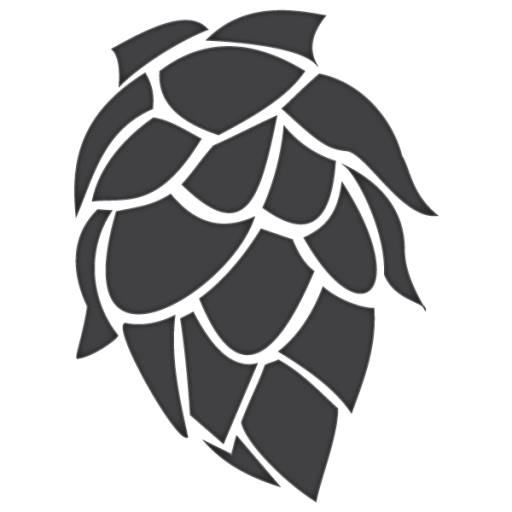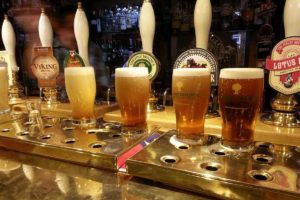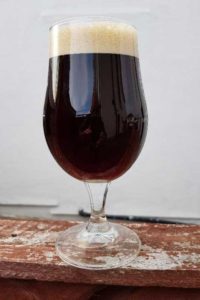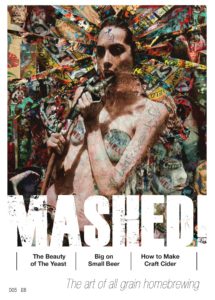by Steve Horsfall
As we use to say “On’t fert gallon, on’t fert sesh”.
I came of drinking age in the late seventies, I worked in a labour-intensive era; the factories were still open and the people who worked together drank together.
I can remember two pubs on the East Street run in South Leeds – The Black Dog and The Fisherman’s Hut. It would be a Friday teatime and we are shoulder deep at the bar and a thick fog of smoke is hanging from the ceiling. Two barmaids pull pint after pint through old Auto Vac beer engines and placed each pint on the bar. The beer would churn (like Guinness) from a tight sparkler to settle and clear after several seconds, leaving a tight creamy head. The landlord and landlady would scuttle back and forth handing out pints and receiving the money. These are session beers or, to me, quaffing beers to slake the thirst. As we use to say “On’t fert gallon, on’t fert sesh”. The point was not to get too smashed, but hey! You know what happened with the point! And after all the weekend is just beginning.
Drinking back then the pubs only opened for two sessions per day usually from 11.00 AM till 3.00 PM then 6.30 PM till 11.00 PM. Sundays: 12.00 AM till 2.00 PM followed by 07.00 PM till 10.30 PM. On Bank Holidays we had an extra half hour at the end of the night. Each drinking session had a 10-minute warning bell “Last orders at the bar” and you had to be off the premises 10 minutes after “Time please”. So, as you can see, drinking back then really was a session.
What is a Session Beer?
Many people think session beers are English-style bitters and mild ales. But most worldwide breweries produce low alcohol beers. I also include all ordinary lagers including Pilsner. A session beer can, therefore be any style. It’s simply a beer with a lower ABV from about 3.0%-5.0% I know these ABV’s are arguable, but this is my view. Its objective is big flavour, a balance of malt and hops, good mouthfeel and low alcohol to keep the drinker coming back for more.
British session beers have always had less bitterness, but recently we appear to be trending toward late hopping and dry hopping, creating big hop flavours and aromas. We could argue about the balance between malt and hops , but that’s progress and New World beer taste. Session Beers are making a comeback to the wider and now younger market, but to me they never really went away.
I confess that some are the most delicious creations ever tasted, but my taste buds are knackered, my wallet is lighter and my hangover hurts.
Session Beer – The New Trend
I personally think this new trend for session beer is due to the rise of the New World IPA’s that are available. Brewers have gone through the stratosphere to stuff more hop IBU’s into their beers, from 40 to as high as 120. Then came the higher ABV’s into their beers with Double IPA’s and Imperials. Then came the NEIPA’s with huge dry hop schedules. I confess that some are the most delicious creations ever tasted, but my taste buds are knackered, my wallet is lighter and my hangover hurts. I genuinely feel we are moving back towards lower ABV but with flavourful session strength beers. There are some classic session beer styles, but session IPAs are currently big business. They still maintain the trend for high hop levels, while allowing drinkers to carry on their drinking and enjoyment to later hours without getting too plastered.
How to brew a Session Beer
-
Temperature: The usual mashing temperature range is around <>63 – 70C but if you mash at a higher temperature of 68C it produces lower temperature sugars. These sugars will be harder for the yeast to consume during fermentation. The sugar left over after fermentation will result in a more full-bodied beer with a big malt backbone to soften bitterness and balance the new high hop rate, and will keep the ABV low, but your attenuation efficiency will drop. You can check this with your brewing software.
-
Malts: >Include one or more crystal or caramel malts to these recipes to impart flavour and sweetness: the more used the more complex the flavours. But err on the side of caution here. Just remember to use small constant percentage amounts as a little will stretch a long way.For dark beers I add the dark grains late in the mash to reduce harshness while preserving colour and flavour. Have you noticed how dark grains are brittle? They break up and tend to appear as floaters in your wort. Little tip: sprinkle them separately on the top of your mash so they can’t get through the grain bill.
-
Adjunts: Do not add refined sugar or adjuncts like corn and rice, they only add carbohydrates with no flavour or body. You can add high-protein grains like oats and rye. Reduce the IBUs proportionally. Maintain BU:GU but this can lead to under-bittering if the beer has a high FG.
-
Hops: Add late-boil and dry hop additions excessively and try to sustain hop aroma.
-
Yeast & fermentation: Pitch a low-attenuating yeast strain. Fermentation should be reasonably fast due to the remaining sugar. Reduce carbonation to about <2psi – it will improve body with less carbonic bite and will boost flavour. Use a more expressive yeast or warmer fermentation temperature because less fermentation will result in a cleaner profile.
-
Serving & storing:Serve the beer fresher as the lack of alcohol gives the beer a shorter shelf-life. As session beers are not usually kept for long, you can dry hop in the keg. This also includes dry hopping lager beers in the keg for lagering. This is good for Pilsners as late hopping on the small scale of homebrewing will work.
Final Thought
They say if you can brew a 3.7% ABV beer or less and maintain good flavours then you can really call yourself a brewer. But brewing a low alcohol beer at home is not hard and the economics of brewing a session beer is better on cost, weight of ingredients and time. Although, you may argue that you’re brewing more often, so that could negate the cost…
Into lower ABV beers?
Don’t miss the small beer articles, interviews and recipes in issue 05 of MASHED! Magazine. Out now.
Images: Steve Horsfall




